How to choose and install a siphon for a dishwasher
 Many craftsmen say that the best option is to connect the dishwasher to the sewer through a siphon with a dishwasher outlet. We are not going to refute this statement; moreover, this publication is precisely intended to convince people to use this connection option in cases where the sink is nearby. But let’s not get ahead of ourselves, let’s consider all the issues that interest us in order.
Many craftsmen say that the best option is to connect the dishwasher to the sewer through a siphon with a dishwasher outlet. We are not going to refute this statement; moreover, this publication is precisely intended to convince people to use this connection option in cases where the sink is nearby. But let’s not get ahead of ourselves, let’s consider all the issues that interest us in order.
A Question of Choice
When wondering about choosing a suitable siphon for connecting a dishwasher or washing machine, you first need to get a rough idea of what siphons are like. In the future it will be easier to navigate and make the right choice. Our article is not about the types of sink siphons, so we will limit ourselves to a short description.
- Pipe siphon. It is essentially a curved pipe that runs from the sink drain to the sewer pipe. Such a siphon will not work for us, since it is impossible to connect the dishwasher drain hose to it.
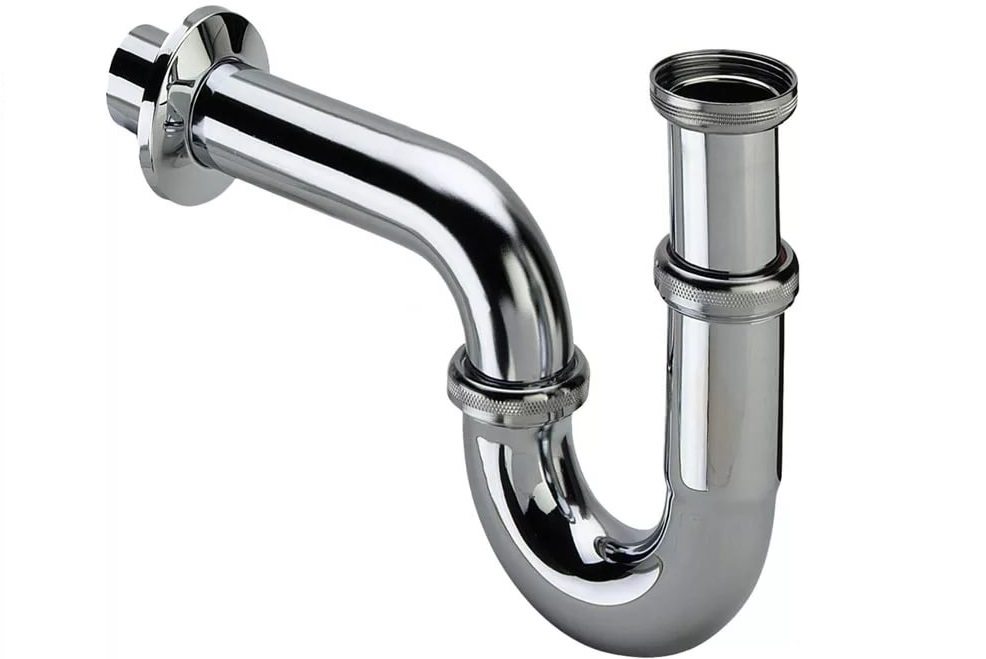
- Bottle type siphon. Unlike a pipe siphon, a bottle siphon has a more complex design, is made of plastic and is used very often. Potentially suitable for connecting a dishwasher, as it has one or more side connections for connecting the drain hose.

The bottle-type siphon has an easily unscrewed settling tank at the bottom. If the siphon becomes clogged with debris, this sump can be unscrewed by first placing a bucket down and removing the blockage.
- Corrugated siphon. The cheapest and easiest to install siphon.Essentially, it is a plastic, easily bendable tube, one end of which is installed on the sink drain, and the other is connected to the sewer pipe. A corrugated siphon of simple design will not suit us, but there are modified versions with one or more side pipes that can be used for our purposes.
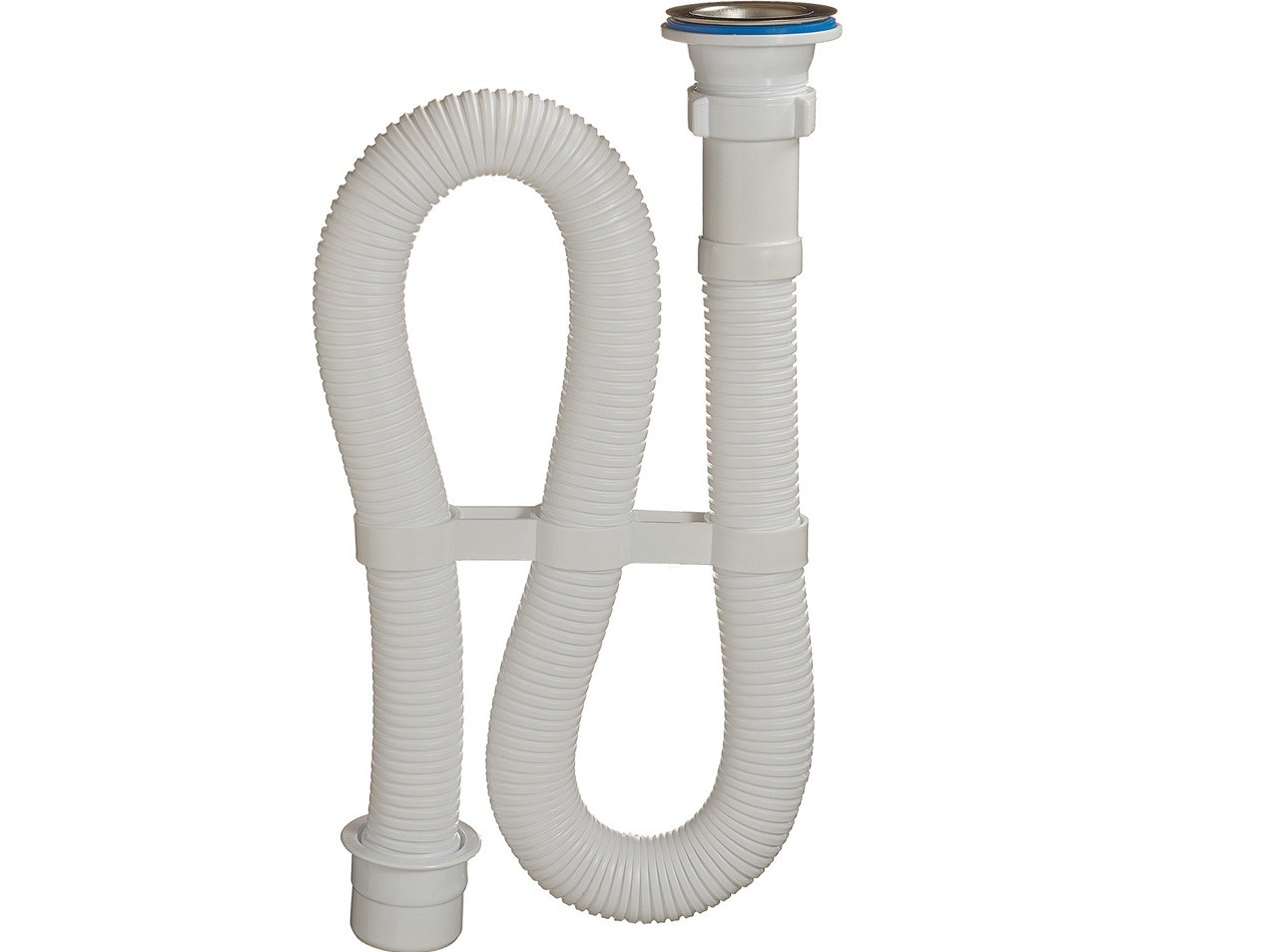
- Hidden siphon. The most expensive siphon, which is reasonable to use only when the sink is installed without a sink, which is, in principle, rare, which is why such siphons are extremely rare in kitchens. The body of such a siphon is made of metal, and most of it is hidden in the wall, hence the name. To connect a dishwasher, such a siphon will only work if it has at least one side pipe.
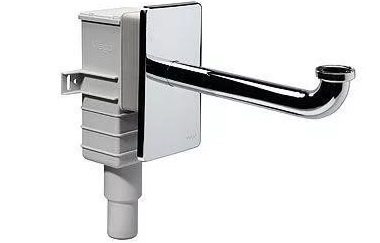
Let us summarize our narrative. Any siphon equipped with side pipes onto which a drain hose can be attached is potentially suitable for connecting a dishwasher. However, when choosing such a siphon, keep in mind that if in your kitchen, in addition to the dishwasher, there will also be a washing machine, then the siphon must have two outlets.
To connect the dishwasher, you can also install a siphon with a non-return valve. A siphon for a dishwasher with a specially designed return valve serves to protect equipment from uncleanliness. What is it about?
Imagine a situation where a deep and dense blockage occurs in a sewer pipe. In this case, the sewage quickly fills the pipe until it becomes clogged and, since there is nowhere else for it to go, it begins to flow back into the dishwasher or washing machine, or simply into the sink.If the siphon is equipped with a non-return valve, then sewage, even under pressure, will never get back into the dishwasher.
Installation Features
So, we have chosen a siphon for connecting the dishwasher, now we need to install it. But first you should remove the old siphon and check the completeness of the new siphon. If any parts are missing, you should contact the seller immediately.
When unscrewing the old siphon, place a bucket or basin under it so that the sewage stagnant inside does not pour out onto the floor. Usually, in order to remove the old siphon and install a new one, no tools are required, but we will take a small adjustable wrench, a screwdriver, sealant and a roll of electrical tape just in case. Let's do the following.
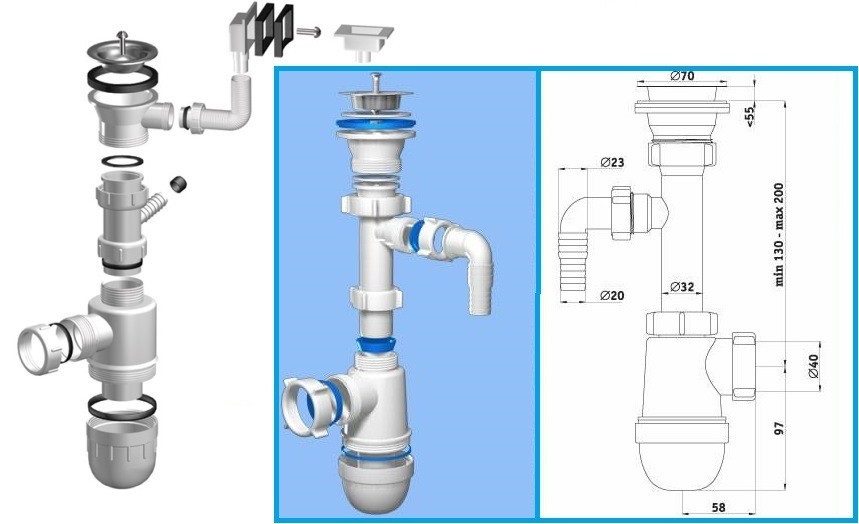
- We put a rubber gasket on the sewer pipe, and then an adapter.
- We put a sewer pipe outlet on the adapter (usually it is made of plastic) and carefully seal the connection.
- We take out the rubber gasket, mesh, screw and nut from the kit, after which we begin to organize the drain hole. We place a rubber gasket around the sink hole, put a mesh on top, then insert a screw into the central hole, which should come out under the sink.
- Take the nut. With one hand we hold the head of the screw from the inside of the sink, with the other hand we attach the screw from below, after which we tighten it with an adjustable wrench, but not too much, so as not to tear it off.
- The nut we screwed on is unusual. There is a thread on the bottom onto which we will screw the siphon body.
- Next, we need to insert the hose into the sewer pipe outlet we previously organized and secure it there.
You can, without further ado, wrap the junction of the siphon tube and the sewer pipe outlet with electrical tape, it will be quite reliable. Although it does not look aesthetically pleasing, it is still not visible under the sink.
- We check all connections, and then run water into the sink to make sure that the siphon is not leaking anywhere.
Connecting the dishwasher
The siphon is ready, all that remains is to connect the dishwasher to it. This process is not at all complicated, however, you first need to understand some rules that will help you avoid mistakes and their consequences.
- It is undesirable for the siphon to be located at a distance of more than 1.5 meters from the dishwasher. The fact is that the dishwasher pump is a rather weak unit. The further the machine is from the point of connection to the sewer, the greater the load on the pump, and this significantly affects its working life.
- When placing the drain hose onto the siphon pipe, secure it additionally with a clamp. This measure will protect the hose from breaking and you from flooding.
- The connection point of the drain hose to the siphon should not be located higher than 80 cm from the floor. Failure to comply with this requirement may result in a “siphon effect”.
- The dishwasher drain hose should not be routed directly from the dishwasher to the siphon. Make sure the hose bends so that some water remains at the bend. This way, the bad smell from the sewer will not penetrate into the dishwasher, although when connecting the dishwasher through a siphon, this measure loses its relevance.
If all the above requirements are met, you can remove the plug from the siphon outlet pipe and put a drain hose with a clamp on it. The clamp should be tightened tightly so that the connection is tight and airtight.
That's all, actually.If you don’t have enough information about connecting a dishwasher to the sewer through a siphon, but need to find out how to install a dishwasher yourself from “A” to “Z”, read the article with the corresponding title, which was published on our website earlier. And we say goodbye to you and hope that this information will be of practical use. Good luck!
Interesting:
Reader comments
- Share your opinion - leave a comment
Categories
Washing machine repair


For buyers

For users

Dishwasher

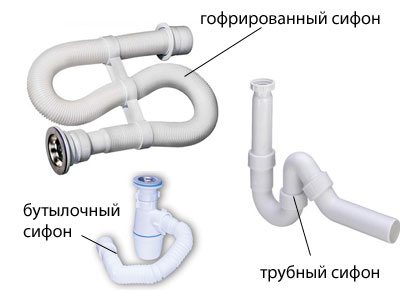

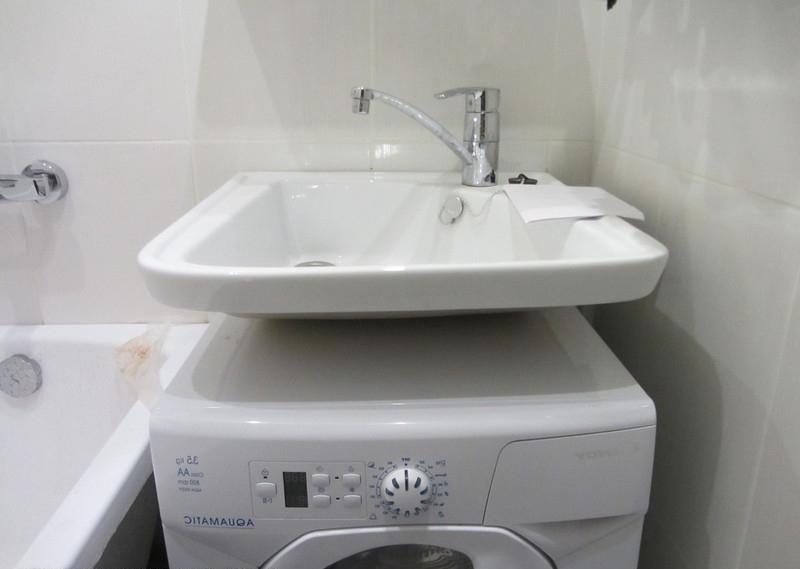

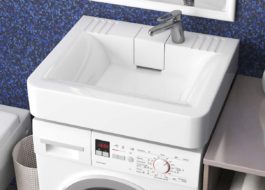











Add a comment